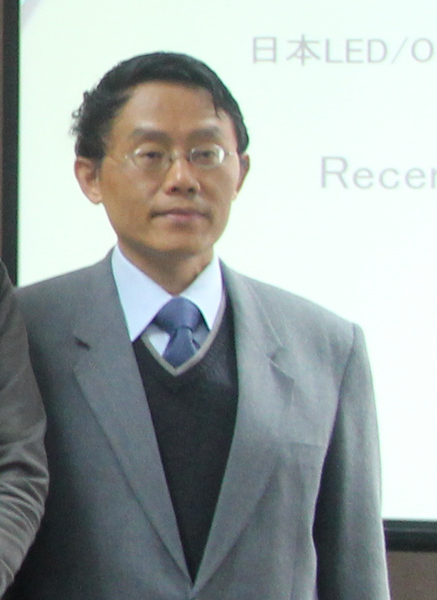As competition in the lighting industry intensifies, manufacturers need to get their heads around upgrading luminous efficacy, said Money Chen, Special Assistant, President Office, Epistar at Taiwan and Japan Lighting Industry Forum at Taiwan International Lighting Show (TILS) 2014 at Taiwan World Trade Center Nangang Exhibition Hall, Taipei, Taiwan.
 |
|
Money Chen, Special Assistant, President Office, Epistar at Taiwan and Japan Lighting Industry Forum at TILS 2014. (LEDinside) |
Leading Taiwanese LED manufacturer, Epistar, for instance is placing less emphasis on improving luminous efficacy, and focusing more on lowering client costs, said Chen. “It is manufacturers nature to improve luminous efficacy, but we need to move beyond that now,” said Chen.
When the lighting industry first started, LED bulbs luminous efficacy could be doubled from 5 lm/W to 10 lm/W, in comparison an increase of 100 lm/W to 110 lm/W today is relatively insignificant in terms of percentage increase , explained Chen. A luminous efficacy of 120 to 150 lm/W is sufficient for most lighting applications, which is why manufacturers should not continue to put all their focus on luminous efficacy alone.
Focusing on reducing client costs, Epistar has chosen to make more simplified LED modules that use less components. Unlike OLED devices, LED luminaires require a lot of additional components such as LED drivers, heat dissipation devices, phosphor coating, optical lens and others before it can be made into an end-product. “As we already know, the more components you use in a device the higher the costs are,” said Chen.
The company first responded to client complaints of LED heat dissipation issues, by trying to simplify heat dissipation components. To make LED modules that can be simply installed into luminaires, Epistar has launched wafer-label package as part of their plans of providing simplified chip components, commented Chen.





 CN
TW
EN
CN
TW
EN






